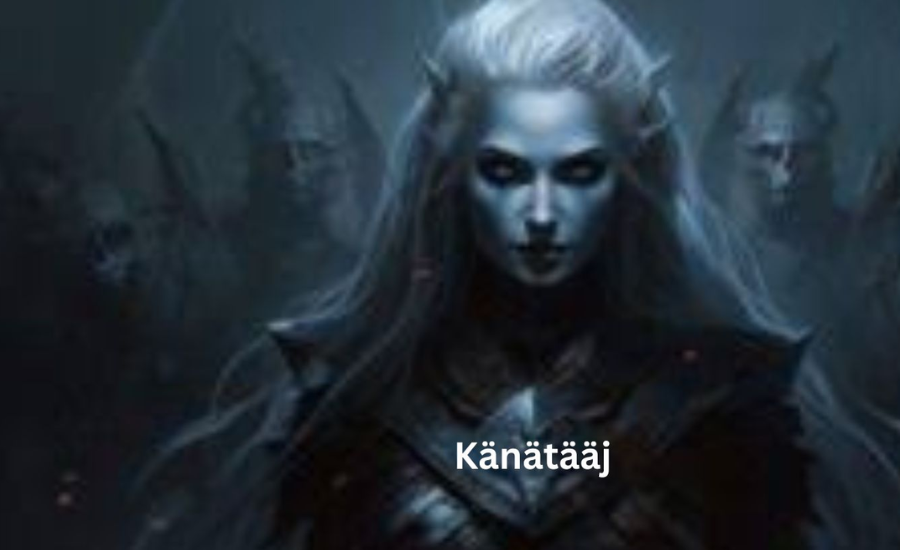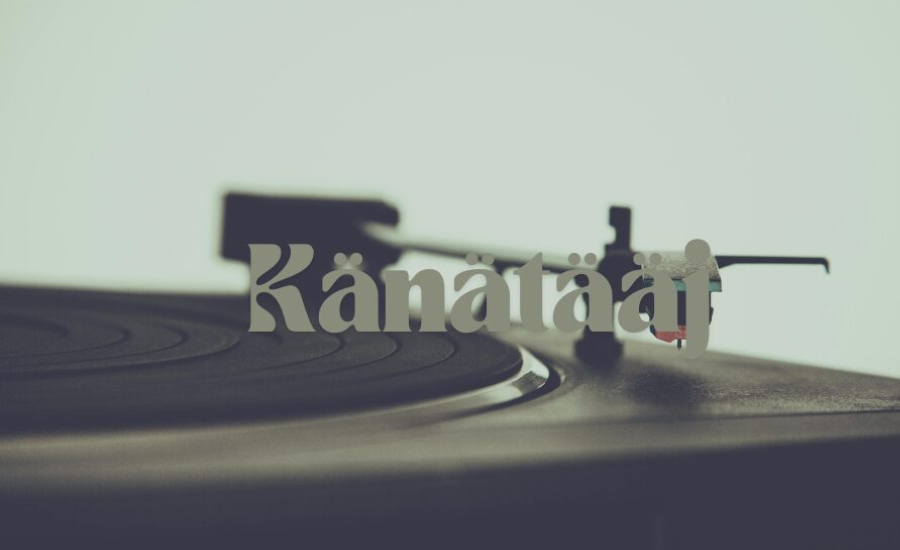July 31, 2024
Immerse yourself in the serene Finnish landscape, where the sounds of ancient melodies fill the air, guiding you through lush forests and tranquil lakes. This is the world of Känätääj, an entrancing form of Finnish folk music that offers more than just a musical experience—it connects listeners to the deep cultural and historical roots of Finland.
Känätääj (pronounced “kän-ä-täh-y”) isn’t simply a genre of music—it’s a living tradition, steeped in Finland’s mythic past and preserved through centuries. At the heart of this tradition lies the Kantele, a traditional string instrument that serves as both a musical vehicle and a storyteller of ancient Finnish lore. In this article, we’ll delve deeper into Känätääj—its origins, significance, and lasting influence on Finnish culture.
Understanding Känätääj: Origins And Cultural Significance

Defining Känätääj
At the heart of Finland’s vibrant folk music scene, Känätääj stands as a unique and cherished tradition. This art form is not just a type of music but a profound expression of Finnish heritage. Rooted deeply in the country’s history and culture, Känätääj is renowned for its use of the Kantele, a traditional string instrument. The word “Känätääj” itself translates to “player” or “performer,” emphasizing the vital role the musician plays in bringing this ancient tradition to life.
But Känätääj is far more than just entertainment. It serves as a cultural bridge, connecting the people of Finland to their ancient roots. The music is an intimate reflection of the country’s relationship with its natural surroundings, as well as its rich folklore and mythology. Through each note played, Känätääj musicians convey the stories and emotions of their ancestors, keeping Finland’s cultural identity alive and evolving.
The Historical Roots Of Känätääj
While the precise origins of Känätääj remain somewhat unclear, there is substantial historical evidence that string instruments like the Kantele have been part of Finnish culture for well over a thousand years. Archaeological findings suggest that these instruments, whose melodic qualities are the hallmark of Känätääj music, were used as early as the 11th century.
By the 16th century, the art of Känätääj music had become more established, and its importance in Finnish society was increasingly recognized. During this period, musicians known as Kanteletar traveled from village to village, captivating audiences with their skills and storytelling. These wandering performers were instrumental in preserving and sharing the narratives of Finnish folklore, historical events, and everyday life through their evocative melodies. As social events like festivals, weddings, and seasonal celebrations often featured Känätääj performances, the music became an essential part of Finnish community life.
The Role Of Känätääj In Finnish Culture
Känätääj has always had a multifaceted role in Finnish society. While it was certainly a form of entertainment, it was primarily a vehicle for storytelling. Musicians used the haunting melodies of the Kantele to tell stories that spanned generations, many of which involved the supernatural, the forces of nature, and the struggles of ancient heroes. These tales were not only meant to entertain but also to teach moral lessons, preserve historical narratives, and maintain a sense of community identity.
Through Känätääj, Finnish myths, legends, and traditions were passed down orally, as the music often served as a mnemonic device for these complex narratives. As the tradition evolved, the Kantele itself became a symbol of the connection between the people and the land, with the music mimicking the sounds of nature—such as the rustling of trees, the flowing of rivers, or the call of birds. By encapsulating the essence of Finnish life and landscape, Känätääj became an important cultural artifact, linking generations together through shared musical experiences.
Moreover, Känätääj wasn’t just for festive occasions. It held sacred significance, too. The melodies were believed to have healing properties, capable of soothing the soul and bringing comfort in times of grief or hardship. As a result, the role of the Känätääj musician was not only artistic but spiritual. These musicians, revered for their skill, were seen as keepers of knowledge, cultural ambassadors, and even spiritual guides who carried the collective memory of the people through their music.
Känätääj As A Preserver Of Finnish Heritage

The importance of Känätääj cannot be overstated when considering its role in preserving Finnish cultural heritage. In a society that placed a high value on oral traditions, the music provided an invaluable means of ensuring that important stories, histories, and traditions were kept alive. In an era when writing was not widespread and literacy rates were low, Känätääj musicians ensured that the collective wisdom of Finland’s past was not lost to time.
Through the centuries, the melodies and stories conveyed by Känätääj performers formed a cornerstone of Finnish identity. The Kantele’s role as both an instrument of communication and cultural expression ensured that the stories it carried were imprinted on the collective consciousness of Finland. Today, the Kantele’s enduring presence in Finnish culture remains a testament to the power of music in maintaining cultural continuity.
Känätääj music has managed to transcend time and geography, evolving and adapting through centuries while staying true to its origins. The music continues to play a vital role in modern Finnish life, whether it’s through contemporary performances that blend traditional Känätääj melodies with modern influences or through its continued place in cultural ceremonies, festivals, and celebrations. As such, the tradition of Känätääj remains a living, breathing part of Finland’s rich cultural landscape—one that continues to influence artists, musicians, and listeners across the globe.
By understanding the historical significance and ongoing role of Känätääj in Finnish culture, we can better appreciate the profound impact it has had on shaping not only Finland’s musical traditions but also its sense of national identity and heritage. Through the Kantele and its evocative melodies, Känätääj has ensured that the stories, values, and beauty of Finland’s past are carried into the present and beyond, allowing future generations to experience the magic and mystery of this timeless tradition.
The Kantele: The Heart Of Känätääj
The Kantele: Instrument Of Enchantment
Central to the art of Känätääj is the Kantele, a traditional Finnish stringed instrument that has been an integral part of the country’s cultural fabric for centuries. As the primary instrument used by Känätääj musicians, the Kantele holds a deep connection to Finnish heritage and mythology. Its enchanting sound evokes the natural world and the mystical stories passed down through generations.
The Kantele is a versatile and evolving instrument, with different forms and sizes, each suited to the musical traditions of various regions. Among the most prominent types of Kantele are the Kielenkantele, a fixed-neck version, and the Karelian Kantele, which features a rounded body and an adjustable neck. The variation in construction between these two types allows for a wide range of tonal differences. Some versions are equipped with as few as five strings, while others boast up to 39 strings, each string carefully tuned to create distinct harmonies. These variations influence the overall resonance, timbre, and complexity of the music, allowing musicians to explore a variety of sounds, from delicate, shimmering tones to deeper, more resonant notes.
Each Kantele, with its unique structure and string count, reflects a particular aesthetic and functional approach to the instrument. The differences in these instruments help shape the character of Känätääj music, with each variation offering its own expressive possibilities, inviting both the musician and the listener into an immersive musical experience.
Playing The Kantele: Technique And Sound

The Kantele’s method of play is one of the features that sets it apart from other folk instruments. Unlike string instruments like the violin or cello, which use a bow to create sound, the Kantele is played by plucking the strings, either with the fingers or with a small plectrum. This plucking technique produces a distinctive, rhythmic sound that gives Känätääj its dynamic character.
The act of plucking the strings produces both percussive and melodic qualities, allowing the musician to alternate between quick, lively rhythms and slower, more reflective passages. The combination of these varied techniques creates a tapestry of sound that is both engaging and evocative. The Kantele’s strings, when plucked, resonate with a natural, almost haunting quality that captures the essence of the Finnish landscape and the stories it has inspired.
Skilled performers of the Kantele can master a wide range of techniques, using different finger movements, varying the strength of plucking, or incorporating intricate fingerpicking patterns. The result is music that flows with a fluidity and expressiveness that seems to capture the nuances of emotion, from the joy of a festive celebration to the sorrow of a tragic myth. This musical flexibility allows the Kantele to breathe life into the stories told by Känätääj musicians, making it not just an instrument, but a storyteller in its own right.
The Musical Significance Of The Kantele
The significance of the Kantele goes beyond its physical form; its role in shaping the sound and identity of Känätääj is immense. The instrument’s tonal qualities, its tuning systems, and the technique used to play it all contribute to its unique sound. One of the most striking features of Kantele music is its modal tunings, which differ from Western diatonic scales. These tunings create a sound that is ethereal and otherworldly, resonating with a mysterious and haunting quality that sets Känätääj apart from other folk traditions.
Känätääj musicians often use these tunings to evoke a deep sense of connection to the natural world. The sounds of the Kantele mimic elements of nature—the rustling of the wind in the trees, the gentle flow of water, or the call of distant birds—enriching the music with a sense of place and belonging. In many ways, the Kantele acts as a medium between the physical and spiritual worlds, carrying the weight of Finnish mythology and folklore into the present day.
These modal tunings are integral to the narrative quality of Känätääj music. As the strings of the Kantele are plucked in different ways, they form melodies that tell the stories of ancient heroes, gods, and spirits. The modal scales allow the musician to emphasize different emotions and atmospheres—whether it is the peaceful calm of nature, the tension of a mythical battle, or the triumph of a heroic figure. Through these tunings, the music of Känätääj connects the listener not just to the past, but to the very essence of Finnish culture.
The Kantele, in its many forms and tunings, remains a central instrument in Finnish folk music, particularly within the Känätääj tradition. It is an instrument that transcends time, carrying the sounds of the past into the present and ensuring that the rich cultural heritage of Finland endures for future generations. The music of the Kantele continues to captivate and inspire, offering a musical expression that is both timeless and deeply rooted in the land, people, and stories of Finland.
Symbolism Of The Kantele: A Connection To Finnish Mythology
Beyond its role as an instrument, the Kantele holds deep symbolic significance in Finnish mythology. In the Kalevala, Finland’s national epic, the creation of the Kantele is a key event that reflects the instrument’s cultural importance. According to the legend, the first Kantele was made from the bones of a giant fish, and it was played by the hero Väinämöinen, a wise old shaman-like figure. The music produced by this early Kantele was said to be so powerful that it could calm storms, heal wounds, and even bring people back from the dead.
This mythic origin of the Kantele connects the instrument to the Finnish belief in the magical properties of music. The idea that the Kantele could influence the natural world, control the elements, and restore balance further underscores its symbolic role as a bridge between humanity and nature.
Through its use in Känätääj, the Kantele continues to evoke these themes of magic and myth, transforming ordinary musical performances into sacred rituals that link past, present, and future. Whether in the hands of a modern-day musician or a traditional performer, the Kantele retains its role as an instrument of enchantment, carrying with it the wisdom, stories, and spiritual resonance of Finland’s ancient traditions.
Känätääj And Finnish Mythology: A Link To The Kalevala

The Kalevala: Finland’s Epic Heart
The Kalevala holds a special place in Finnish culture, regarded not only as a national epic but as the very heart of Finland’s literary and mythological heritage. Compiled by Elias Lönnrot in the 19th century, the Kalevala consists of a collection of ancient Finnish oral poetry, recounting the stories of heroes, gods, spirits, and the struggles that shaped the world. Through its rich narrative, the Kalevala has played a crucial role in shaping the Finnish identity, preserving the deep connections between the land, its people, and the myths that have been passed down for generations.
The relationship between Känätääj and the Kalevala is one of deep resonance. While direct historical connections remain speculative, many scholars suggest that the Kantele, the instrument central to Känätääj, may have once accompanied the oral recitations of the Kalevala. It is believed that the melodies of the Kantele enhanced the storytelling experience, helping to evoke the emotions of the epic’s grand tales. The combination of music and narrative would have elevated the power of the Kalevala, intertwining sound with the mythological and heroic themes of the poems.
A Shared Cultural Language
To imagine the fusion of Känätääj and the Kalevala is to picture a vibrant tradition, deeply embedded in Finnish cultural life. Imagine a cold winter evening, with the flickering light of a fire casting long shadows across a gathering of people. At the heart of this gathering, a Känätääj performer begins to pluck the strings of the Kantele, the sound resonating through the room. As the melody sways with the rhythm of the stories, the audience is transported to the mythical lands of the Kalevala, where the adventures of Väinämöinen, Lemminkäinen, and Kullervo come alive through song.
This artistic tradition would have served as both entertainment and spiritual connection, creating a shared cultural experience between the performer and the listeners. The music would have not only amplified the dramatic moments of the stories but also added layers of emotional depth, offering a more immersive and powerful connection to the narrative. In this way, Känätääj was more than just a musical tradition; it was a vehicle for preserving and transmitting the very soul of Finnish mythology, ensuring that these ancient stories would be remembered and celebrated for generations to come.
The Resurgence Of Känätääj In Modern Times
A Living Tradition In Contemporary Music
Though deeply rooted in history, Känätääj has experienced a revival in the modern era. Contemporary Finnish artists are breathing new life into this ancient tradition, melding traditional Kantele music with modern sensibilities to create an exciting and accessible sound for new generations. Musicians like Anna Puu and the folk group Värttinä have been instrumental in keeping Känätääj alive, incorporating contemporary elements while maintaining the core principles of the tradition. These artists offer listeners a glimpse into Finland’s musical past while making it relevant for today’s audience, fostering a deeper appreciation for Finnish folk music and its connection to Finland’s national identity.
By infusing Känätääj with modern sensibilities, these artists have brought the tradition to a global stage, introducing new audiences to the haunting melodies of the Kantele and the rich, evocative storytelling that is inherent to the style. This resurgence reflects a broader trend in which traditional music is being embraced by a new generation of musicians and listeners, ensuring that Finland’s cultural heritage remains vibrant and relevant in the 21st century.
Influence On Modern Finnish Sound

Beyond the specific realm of folk music, Känätääj has made its mark on the broader Finnish music scene. Elements of the Kantele, including its distinctive plucking technique and rhythmic patterns, have found their way into the works of contemporary Finnish musicians across genres. From pop and rock to classical and experimental music, the influence of the Kantele’s sound is felt throughout Finland’s diverse musical landscape.
Artists have drawn inspiration from Känätääj to add texture and depth to their music, layering the gentle resonance of the Kantele with modern instruments and sounds. This fusion of traditional and contemporary styles has not only enriched Finnish music but also created a unique sound that reflects the ongoing evolution of Finnish culture. In this way, Känätääj has contributed to a broader national musical identity, helping to shape the sound of Finland as it continues to evolve.
Final Thoughts: Känätääj And Its Enduring Legacy
The legacy of Känätääj is one that continues to endure and thrive, both within Finland and across the globe. The tradition of Känätääj is more than just music; it is a living cultural artifact that bridges Finland’s past with its present, connecting the ancient tales of the Kalevala with modern-day performances and contemporary interpretations. Whether through the delicate melodies of the Kantele or the powerful stories told by Känätääj musicians, the tradition continues to serve as a powerful tool for preserving and celebrating Finnish folklore and mythology.
In the present day, the influence of Känätääj can be felt not only in the music but also in the shared cultural experiences it fosters. The tradition brings people together through its rich narratives and captivating performances, creating a sense of belonging that is rooted in Finnish identity and history. For those seeking to immerse themselves in the magic of Känätääj, there are countless opportunities to experience this tradition firsthand, from live performances to recorded music by artists like Värttinä, who offer an authentic and contemporary take on this ancient art form.
Känätääj’s ability to transcend time and maintain its cultural relevance speaks to the enduring power of music as a storytelling medium. The Kantele’s mystical sound, the rhythmic plucking patterns, and the epic tales it carries are all part of a legacy that will continue to inspire and captivate audiences for generations to come. As Känätääj evolves, its ability to adapt while honoring its roots ensures that it remains a profound and lasting expression of Finnish cultural identity.
Conclusion: The Timeless Charm Of Känätääj
Känätääj is more than just a musical tradition—it’s a living bridge between Finland’s past and present. Through the haunting sounds of the Kantele and the rhythmic plucking of its strings, Känätääj continues to tell the stories of ancient folklore, connecting modern listeners with the country’s rich cultural heritage. From its deep roots in Finnish mythology and the Kalevala to its contemporary adaptations, Känätääj remains a powerful expression of Finnish identity.
As artists continue to bring fresh interpretations to this age-old tradition, Känätääj’s ability to evolve while retaining its historical essence ensures its place in the hearts of both Finnish people and the global audience. Whether experienced in a concert hall or through recorded music, Känätääj offers a profound, immersive experience that transcends time, making it a vital and enchanting part of Finland’s cultural landscape.
FAQs
Q: What is Känätääj?
A: Känätääj is a traditional form of Finnish folk music, primarily characterized by the use of the Kantele, a stringed instrument. It is deeply rooted in Finnish culture and storytelling.
Q: What makes the Kantele unique?
A: The Kantele is a unique stringed instrument that has been played in Finland since at least the 11th century. It is known for its delicate, rhythmic melodies and its role in storytelling.
Q: How is Känätääj different from other folk music traditions?
A: Känätääj stands out due to its use of the Kantele and its distinctive plucking techniques. These elements create a sound that is both rhythmic and melodic, giving it a unique auditory identity.
Q: How is Känätääj connected to the Kalevala?
A: While the connection between Känätääj and the Kalevala remains speculative, it is believed that Känätääj melodies may have once been used to accompany the recitation of the Kalevala, enriching its mythical stories with music.
Q: How can I experience Känätääj today?
A: You can explore Känätääj music by listening to recordings from modern artists such as Anna Puu or Värttinä, or attending live performances.
Stay connected for the latest news and updates on Halfbreaking.com
